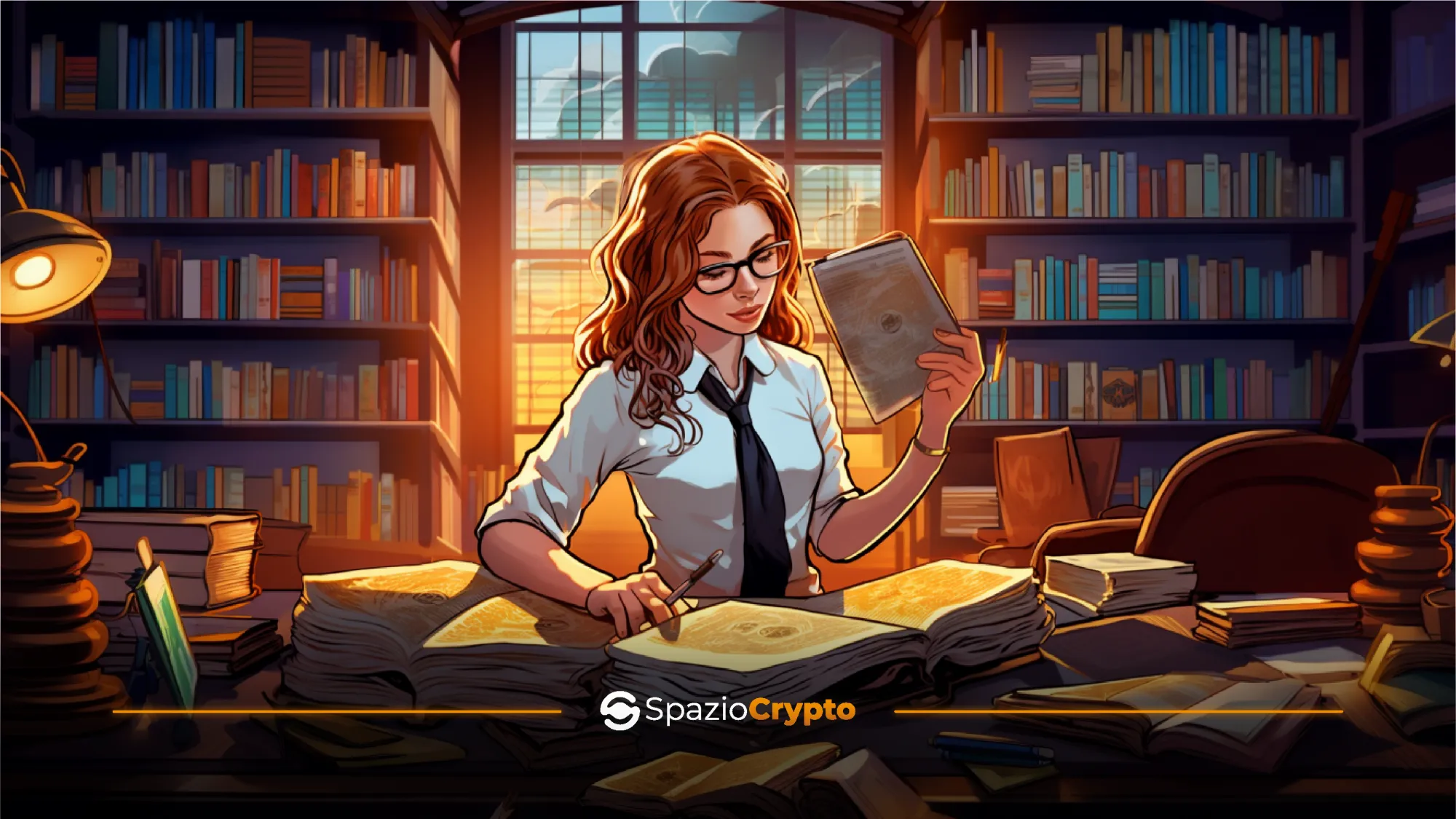How often do we hear the word DYOR? So many that we sometimes ignore it, forgetting its importance. In fact, whether you are an OG in the market or a newcomer, the DYOR rule applies in both cases.
DYOR stands for Do Your Own Research. Indeed, with an ever-increasing number of tokens in the cryptocurrency market, before choosing which horse to bet on, it is essential to delve deeper into the project.
In this article of our Web3 Guide, we will provide a simple but comprehensive explanation of the research process that every investor must go through before making any decision.
DYOR as a tool for eliminating emotionality
An investor without knowledge and conviction remains at the mercy of the asset price and the quality of an asset can only be judged by its price performance, hence the Fomo (Fear Of Missing Out). Instead, the investor who has done his research has developed his own investment thesis and conviction, which together will make him less sensitive to volatility.
Do not ignore the phenomenon of 'shilling', which is widespread during bull market periods. Shilling (shill) refers to the act of over-enthusiastically and emphatically promoting a cryptocurrency solely for one's own gain.
Only through proper research can we assess the validity of the cryptocurrency being promoted, and in most cases avoid giving away our savings to promoters.
DYOR (Do Your Own Research): How Do You Do It?
Cryptocurrencies are the most dynamic market we know of, hundreds of projects are born and die every day, and thanks to the Decentralised Finance (DeFi) there is no need to wait for someone to approve their listing on the market.
In fact, there are no institutional data sources, but we have to trust the documents and information shared by the various teams. The first source of information is therefore the project website, here we will find the official whitepapers and sometimes, other useful documents. From these documents we will be able to gather very good information, however the Whitepaper tells us what the objective of the project is and how it will achieve it but it does not tell us anything about the current state of things. So it is essential to follow the updates through social networks. X (formerly Twitter) is the social network of reference for the cryptocurrency world, followed by Discord and Telegram. From here we can interface with the community, within which we can find experts and authoritative sources.
It is often the community itself that develops very useful tools to monitor the state of the art, through Explorers or other tools. Dune.com or tokenterminal.com are portals where users can build and process data in reference to various blockchains. It will be crucial to identify the 'moat', to quote Warren Buffet, i.e. a unique quality that differentiates that protocol from others in the industry (speed for Solana, sharding for MultiversX etc.).
After gathering this technical information, let us delve deeper into the research, moving away from the purely conceptual sources made available by the team.
Profitability, Rare goods in cryptocurrencies
An additional aspect to consider is the profitability of the protocol. If we think of traditional markets, profitability is the most obvious and monitored element. This quality, on the other hand, is particularly rare and in many cases this is not reflected in the protocol token, Uniswap for example is a very profitable Decentralised Exchange, yet its UNI token and investors do not benefit from it, as UNI only has a governance function. Ethereum on the other hand manages to reflect its profitability in its ETH token through a burn policy. ETH in fact, which we have already discussed in detail in this article, through a series of mechanisms burns far more ETH than is produced with inflation and this makes ETH increasingly scarce. Other L1s, on the other hand, have not reached profitability and their token continues to be diluted through inflation.
The sector in which it is most common to find profitable protocols is that of DeFi protocols, but as already mentioned, the token is often unrelated to the performance of the protocol. Therefore, it is also crucial to understand if and how the token acquires value as the protocol gains popularity and users, and what is the reason why investors may decide to buy it. GMX for example, a DEX of perpetuals, is a very profitable protocol in that many traders pay commissions to make their trades and these are partially distributed to the stakers of the GMX token, as a sort of dividend. The more profitable GMX is, the higher the return on the token will be. In many other cases, however, see UNI, the token is completely unrelated to the protocol.
DYOR: the Tokenomics
Now let's talk about tokenomics, a term coined directly from the cryptocurrency market that combines the words token and economics. This term refers to all the characteristics of the token in question, such as inflation or whether or not there is a token cap. Other characteristics to consider are the presence of burns or buybacks programmed by the protocol team itself. But let us go step by step.
There are no good or bad characteristics, but it is the combination of them that determines the quality of the token, so we try to understand in the research phase whether and how tokenomics influences the asset's price trend, according to the protocol's business model.
For instance, the absence of a Cap, i.e. a token ceiling can be negatively evaluated in the first analysis (Bitcoin has a cap of 21 million BTC and is one of the pillars on which investors rely), however, the presence of continuous burns could even make the token in question deflationary, exactly as happens on Ethereum, whose mechanism has already been explored in this article.
The Token Distribution
At launch, every protocol needs liquidity. This is provided by investors through events such as presales or ICO to which a certain amount of tokens is awarded. Knowing the initial distribution is crucial in the research phase, an unequal distribution risks centralising all governance power in the hands of a single investor in the first place, but the main risk is that he or she will sell the tokens on the market if he or she is not willing to keep the token in the long term. If the token's trading volumes are not high enough, as is common with low-ranking tokens, the market will not be able to withstand the selling pressure from the initial investors and will experience sharp declines.
Tendentially, tokens given in exchange for initial funding have a 'lock-in' period, which means that not all tokens can be instantly sold to the market. This prevents initial investors from exerting continuous pressure to sell or sell all the tokens in their possession causing the price to fall dramatically. Knowing the lock dynamics is important as they combine with tokenomics. A token could theoretically be deflationary thanks to some burn mechanisms, but deflation could be nullified precisely by the continuous unlocking of investors' tokens that will flood the market. In fact, let us remember that only the amount of unlocked tokens is taken into account when calculating the price and thus the market cap. In fact, let us recall the cases of Filecoin and ICP, which reached very high positions in the rankings, precisely because of the low amount of tokens in circulation at the beginning of their journey, when investors started to unlock their tokens, both coins saw a drastic drop in their price. In fact, it is good to consider not only the market cap, but also how much the FDMC (Fully Diluted Market Cap) would amount to, which tells us how much market cap that coin would need to maintain its price if all the tokens were in circulation. Filecoin's FDMC exceeded Ethereum's current mcap! This was clearly a danger signal. A red flag, in the jargon.
DYOR on the team
After assessing the quality of the token, we cannot help but spend a few minutes studying the team. To assess its credibility and competence, we can evaluate a number of characteristics:
- Experience;
- Public presence, a public team is defined as "doxed";
- Transparency;
- Ability to establish partnerships and collaborations;
Some metrics for the DYOR
Well, now that we are familiar with the protocol on a theoretical level, let's throw our hands in the ring and see what metrics we can use to understand in which direction the project is going. Obviously, metrics vary by protocol type and do not apply to all tokens.
For example, to evaluate an L1 we can look at the daily number of active users, the TVL deposited on the chain, or the number of daily transactions. By combining these metrics we can derive very interesting data, for example: the MCAP / DAU (Daily Active Users) rate tells us how much each investor, on average, has invested in that particular coin. The TVL / DAU rate tells us how much each individual user has deposited on the chain. Again, the MCAP / TVL rate tells us how much the value of the assets deposited on the chain is compared to the value of the chain itself. To evaluate an L2 on the other hand, although the use case is similar, the metrics do not have the same validity. In most L2s, the reference token is not used to pay for transactions and consequently, the value of the token does not reflect the value of the chain itself. The MCAP / TVL rate will not have the same validity as it would have if used on the data of an L1.
Also in this case, there are no good or bad metrics, but the evaluation must be combined with all the other various characteristics we have identified in our research.
FOMO
We understand how irrational and often narrative-driven the cryptocurrency market is, so in the analysis phase we also need to consider how much hype that coin is in at the time. To do this, we don't have specific metrics, but we can get an idea of the level of FOMO through a social network analysis of the protocol or a sentiment analysis in the discord / telegram of the community. We could also analyse the trading volume of the coin, but this clearly needs to be adjusted to the market cap as highly capitalised coins clearly have higher trading volumes and this does not necessarily indicate that there is too much euphoria.
A quite useful tool to assess investor euphoria is Google Trends, which is useful to monitor searches related to the project. Sudden increases in searches could indicate an increase in investor interest and potentially FOMO. Mind you, hype is not necessarily a bad thing! The boost due to FOMO may last for a long time, but it does indicate that we are definitely not the first ones on the train.
DYOR: Flexibility, Valuation and Risk Management
Now that you have officially done your research, you are ready to consider whether to allocate part of your portfolio to that particular asset. Formulate your own investment strategy, and don't change it! Keep your strategy as long as it is valid, do not be influenced by market trends, but also be flexible. If something changes over time, analyse the situation, and consider whether to change your investment strategy.
Determine how much exposure you want to cryptocurrency trends and always try to match your exposure to the market cap of the project. Remember that although the market is fast, dynamic and sometimes irrational, most of the time it is always efficient. So if a currency has a low market cap, it is probably not favourably valued by the market. Conversely, coins that are well regarded by investors are those that already have a good ranking. Therefore, finding the x100 gem is highly complicated and in most cases is a stroke of luck, so our goal is to inform ourselves and try to find those coins that can at least follow the market trend and avoid investing our savings in scammy and worthless projects.
Here, on Spaziocrypto, you can always count on our research on value protocols. We are happy to share them free of charge with our dear readers through our detailed Web3 guides!








